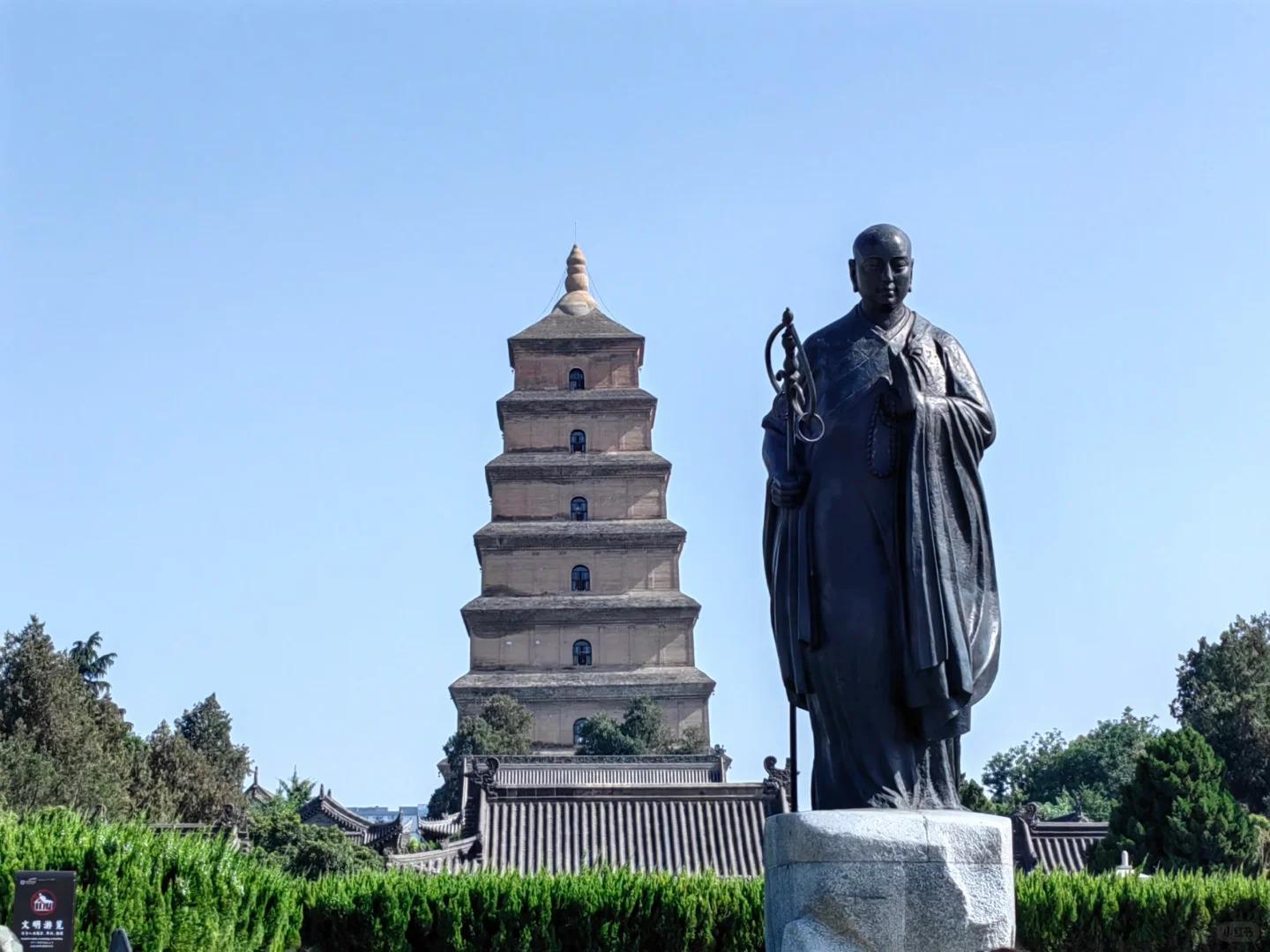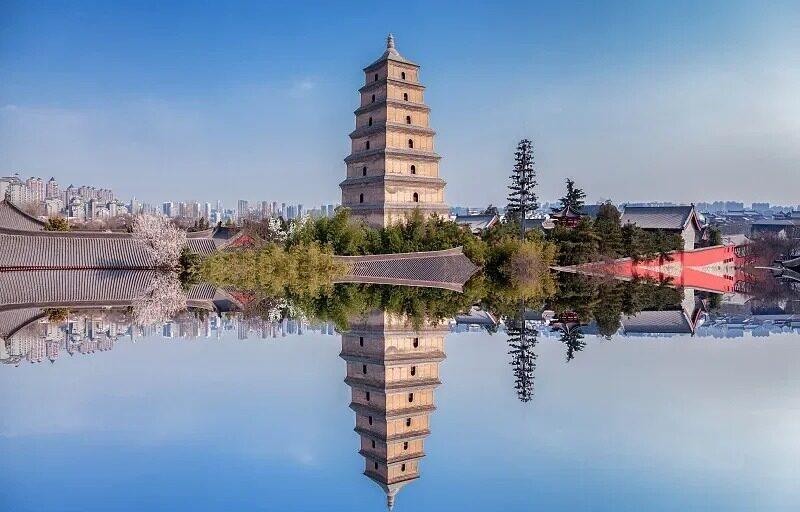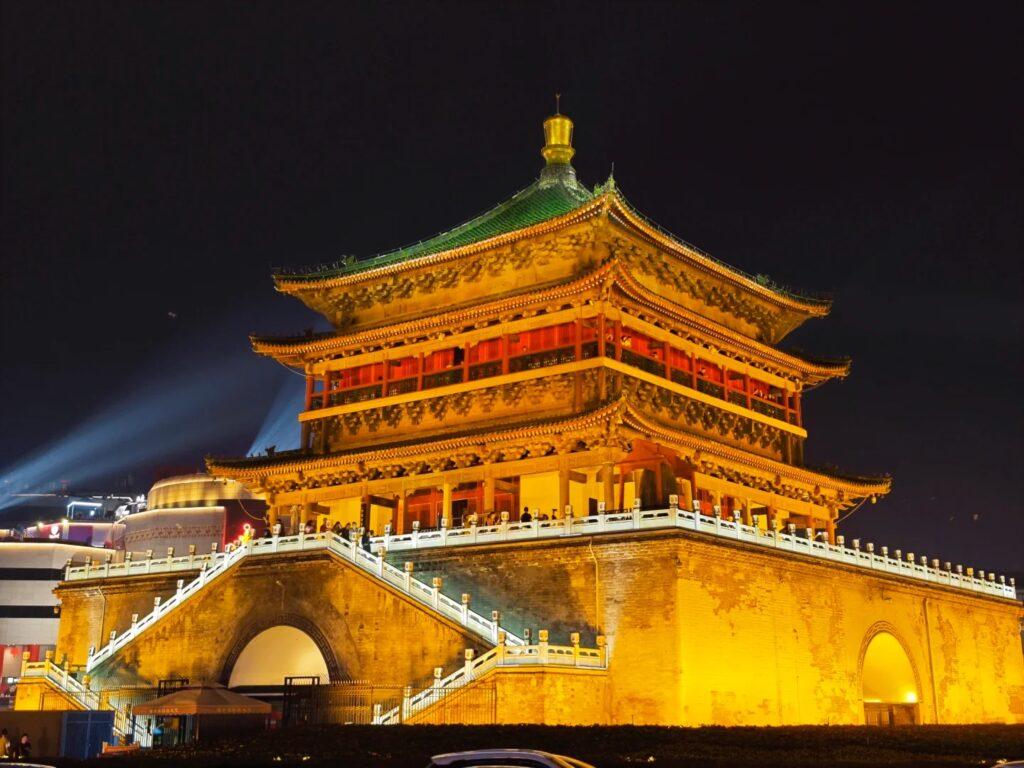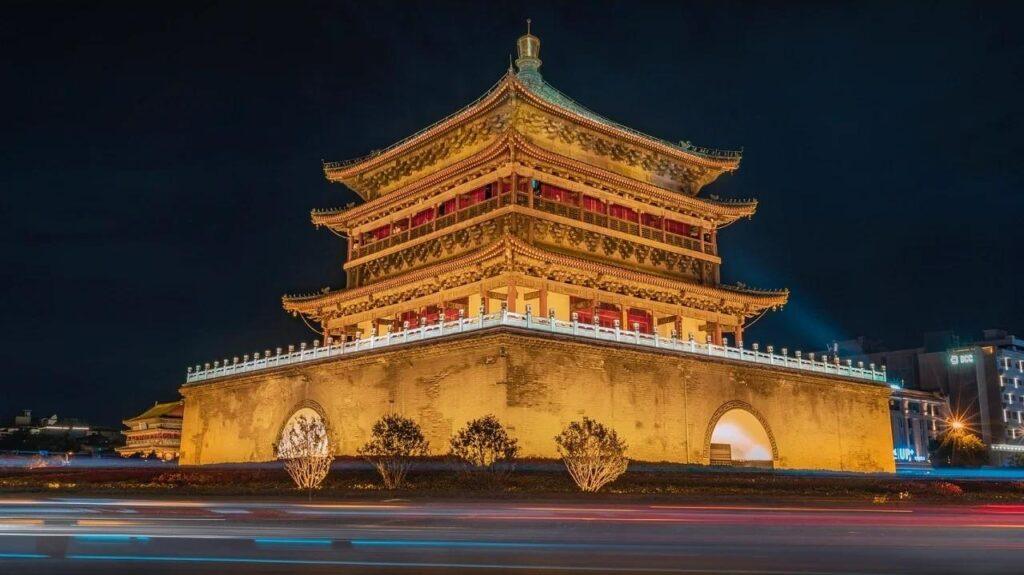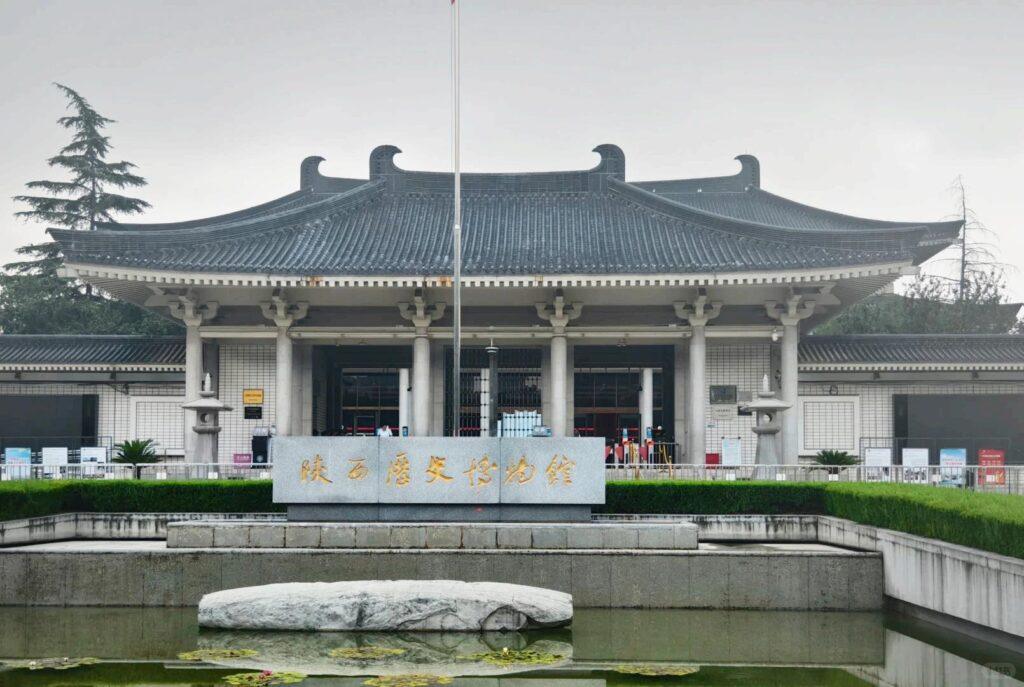Visiting Information
| Information | Details |
|---|---|
| Chinese Name | 大雁塔 (Dà Yàn Tǎ) |
| Location and Address | Yanta West Road, Yanta District, Xi’an, Shaanxi Province, China |
| Opening Time/Hours | 8:00 AM – 5:00 PM (March to November) 8:00 AM – 4:30 PM (December to February) |
| Entrance Fee | 50 CNY (Pagoda only) 80 CNY (Pagoda and Da Ci’en Temple) |
| How to Get There | By Metro: Line 3 or Line 4 to Dayanta Station, Exit C By Bus: Take bus 5, 19, 24, 27, 30, 34, 218, 221, 222, 500, 501, 521, 527, 606, 608, 609, or Tourist Bus 8 (610) to Big Wild Goose Pagoda By Taxi: Easily accessible from anywhere in Xi’an |
| Best Time for Visit | Spring (March to May) and Autumn (September to November) for comfortable weather |
| Contact Info | Phone: +86 29 8526 8507 |
Overview
The Big Goose Pagoda, also known as the Giant Wild Goose Pagoda, is an iconic landmark in Xi’an, China. Built in 652 during the Tang Dynasty, this Buddhist pagoda is one of the most significant ancient structures in China. It stands as a symbol of Xi’an’s rich history and cultural heritage, attracting millions of visitors each year with its impressive architecture and historical significance.
Historical Background
The Big Goose Pagoda was originally built to house Buddhist sutras and figurines brought back from India by the famous Tang Dynasty monk Xuanzang. Xuanzang’s 17-year journey to India and his subsequent translation work played a crucial role in the spread of Buddhism in China. The pagoda has undergone several renovations and reconstructions over the centuries, with the current structure dating back to the Ming Dynasty (1368-1644). It has survived numerous earthquakes and wars, standing as a testament to the architectural prowess of ancient China and the enduring influence of Buddhism in Chinese culture.
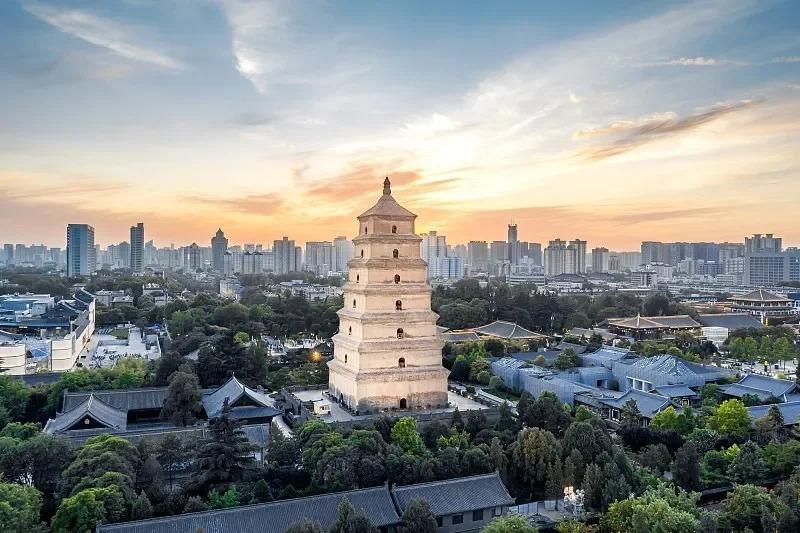
Architectural Features
- Multi-Tiered Structure: The Big Goose Pagoda is a square brick structure with seven stories, reaching a height of 64 meters (210 feet). Each level is smaller than the one below, creating a distinctive tapered appearance that is characteristic of Tang Dynasty architecture.
- Eaves and Cornices: The pagoda features traditional Chinese architectural elements such as upturned eaves and intricate cornices at each level. These not only add to its aesthetic appeal but also serve practical purposes like rain protection.
- Staircase: An internal staircase allows visitors to climb to the top of the pagoda. The stairs are steep and narrow, reflecting the architectural style of the time and adding to the authentic experience of visiting an ancient structure.
- Base Platform: The pagoda sits on a large square base platform, which enhances its stability and grandeur. This platform is adorned with intricate carvings and statues, offering visitors a glimpse into Buddhist iconography.
- Surrounding Complex: The pagoda is part of the larger Da Ci’en Temple complex, which includes various halls, courtyards, and gardens. This layout reflects traditional Chinese Buddhist temple architecture and provides a comprehensive cultural experience for visitors.
Cultural Importance
The Big Goose Pagoda holds immense cultural importance in China. It symbolizes the golden age of the Tang Dynasty and the significant role of Xi’an as the ancient capital. The pagoda is closely associated with the spread of Buddhism in China and the cultural exchange between China and India during the Tang era. It serves as a tangible link to the life and works of Xuanzang, whose journey inspired the classic Chinese novel “Journey to the West.” The pagoda also houses numerous Buddhist artifacts, scriptures, and relics, making it an important site for Buddhist pilgrims and scholars. Its enduring presence in Xi’an’s skyline represents the city’s rich history and its status as one of the cradles of Chinese civilization.
Surrounding Attractions
- Da Ci’en Temple: The temple complex surrounding the Big Goose Pagoda is a significant attraction in its own right. It features beautiful gardens, halls with Buddhist statues, and areas for meditation and worship, offering visitors a serene environment to explore Chinese Buddhist culture.
- North Square of Big Goose Pagoda: This large public square features an impressive musical fountain show, the largest of its kind in Asia. The square is beautifully landscaped and includes statues depicting scenes from the Tang Dynasty, making it a popular spot for both locals and tourists.
- Shaanxi History Museum: Located nearby, this museum houses over 370,000 artifacts that span the long history of Shaanxi Province. It provides an excellent opportunity to delve deeper into the region’s rich cultural heritage.
- Tang Paradise: This theme park, a short distance from the pagoda, is designed to recreate the grandeur of the Tang Dynasty. It features traditional architecture, gardens, and cultural performances, offering visitors a immersive experience of ancient Chinese culture.
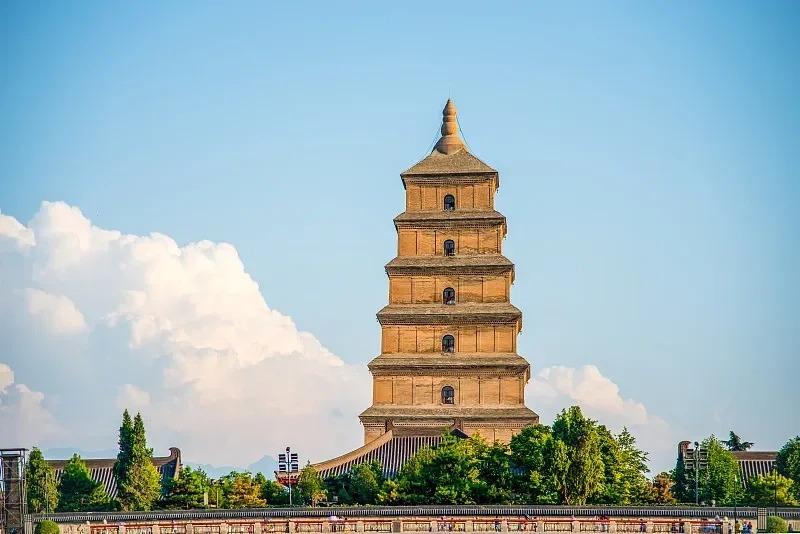
Photography Opportunities
- Pagoda Exterior: The majestic silhouette of the Big Goose Pagoda against the sky provides excellent opportunities for wide-angle shots, especially during golden hour or blue hour when the lighting enhances its architectural features.
- Panoramic Views: Climbing to the top of the pagoda offers panoramic views of Xi’an, allowing for stunning cityscape photographs that capture both the ancient and modern aspects of the city.
- Temple Complex: The surrounding Da Ci’en Temple complex, with its traditional Chinese architecture, gardens, and Buddhist statues, provides numerous opportunities for capturing the essence of Chinese Buddhist culture.
- North Square Fountain Show: The musical fountain show in the North Square, especially when illuminated at night, offers dynamic and colorful photo opportunities that contrast beautifully with the ancient pagoda in the background.
- Cultural Performances: Occasional cultural performances and events held near the pagoda provide chances to capture vibrant images of traditional Chinese costumes, dance, and music against the backdrop of this historic monument.
Modern Importance
- Cultural Heritage Preservation: The Big Goose Pagoda serves as a prime example of China’s efforts in preserving its cultural heritage. Its continued maintenance and restoration highlight the country’s commitment to protecting historical sites.
- Educational Resource: The pagoda and its associated museum play a crucial role in educating visitors about Chinese history, Buddhism, and cultural exchange along the Silk Road. It serves as a living textbook for students and researchers of Chinese culture and history.
- Tourism Hub: As one of Xi’an’s most recognizable landmarks, the Big Goose Pagoda is a major draw for domestic and international tourists, contributing significantly to the local economy and helping to promote Chinese culture globally.
- Urban Landmark: The pagoda continues to be an important urban landmark and a symbol of Xi’an’s identity. It serves as a focal point for city planning and development, influencing the architectural landscape of the surrounding area.
- Cultural Exchange Platform: The site hosts various cultural events and exhibitions, fostering continued cultural exchange and dialogue, much like its historical role during the Tang Dynasty.
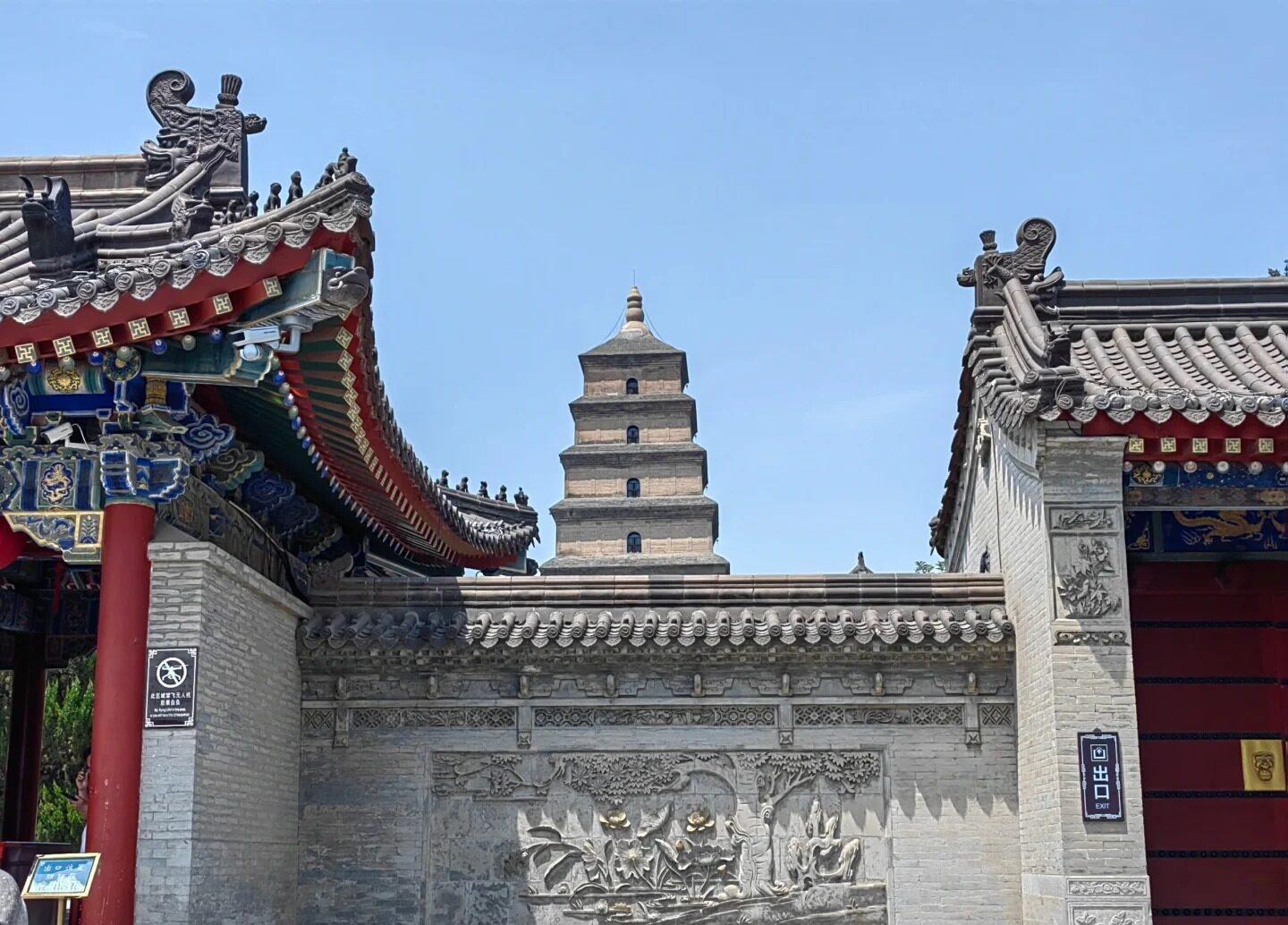
FAQ
- What is Big Goose Pagoda famous for?
Big Goose Pagoda is famous for its impressive Tang Dynasty architecture, its connection to the monk Xuanzang and the spread of Buddhism in China, and its role as a symbol of Xi’an’s rich history. - What’s inside Big Goose Pagoda?
Inside Big Goose Pagoda, visitors can find Buddhist scriptures, statues, and relics. There’s also an internal staircase allowing visitors to climb to different levels for views of Xi’an. - Is Big Goose Pagoda free?
No, Big Goose Pagoda is not free. There is an entrance fee of 50 CNY for the pagoda only, or 80 CNY for both the pagoda and Da Ci’en Temple. - Is Big Goose Pagoda worth visiting?
Yes, Big Goose Pagoda is definitely worth visiting. It offers a unique glimpse into ancient Chinese architecture, Buddhist history, and provides panoramic views of Xi’an. - What to do in Big Goose Pagoda?
At Big Goose Pagoda, you can climb the pagoda for city views, explore the Da Ci’en Temple complex, view Buddhist artifacts, enjoy the North Square fountain show, and learn about the site’s history. - How do I get to Big Goose Pagoda in the local city?
In Xi’an, you can reach Big Goose Pagoda by taking Metro Line 3 or 4 to Dayanta Station and using Exit C. Alternatively, numerous bus routes stop nearby, or you can easily reach it by taxi from anywhere in the city. - How to visit Big Goose Pagoda?
To visit Big Goose Pagoda, purchase a ticket at the entrance, explore the pagoda and temple grounds at your own pace or join a guided tour. It’s open daily, with slightly shorter hours in winter months.


